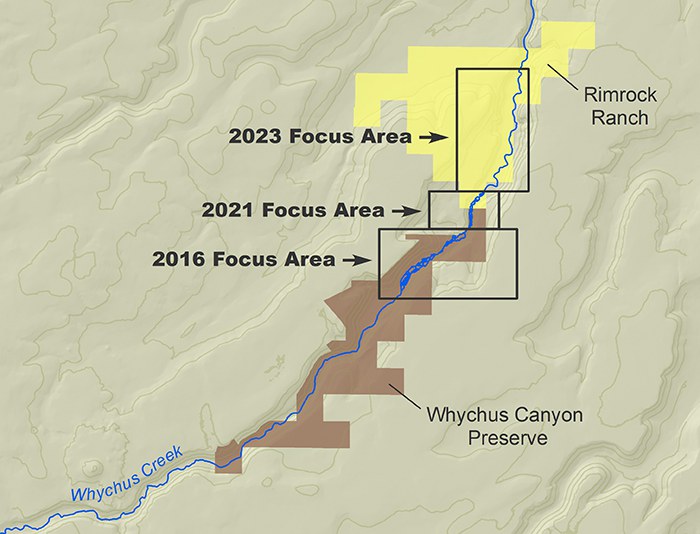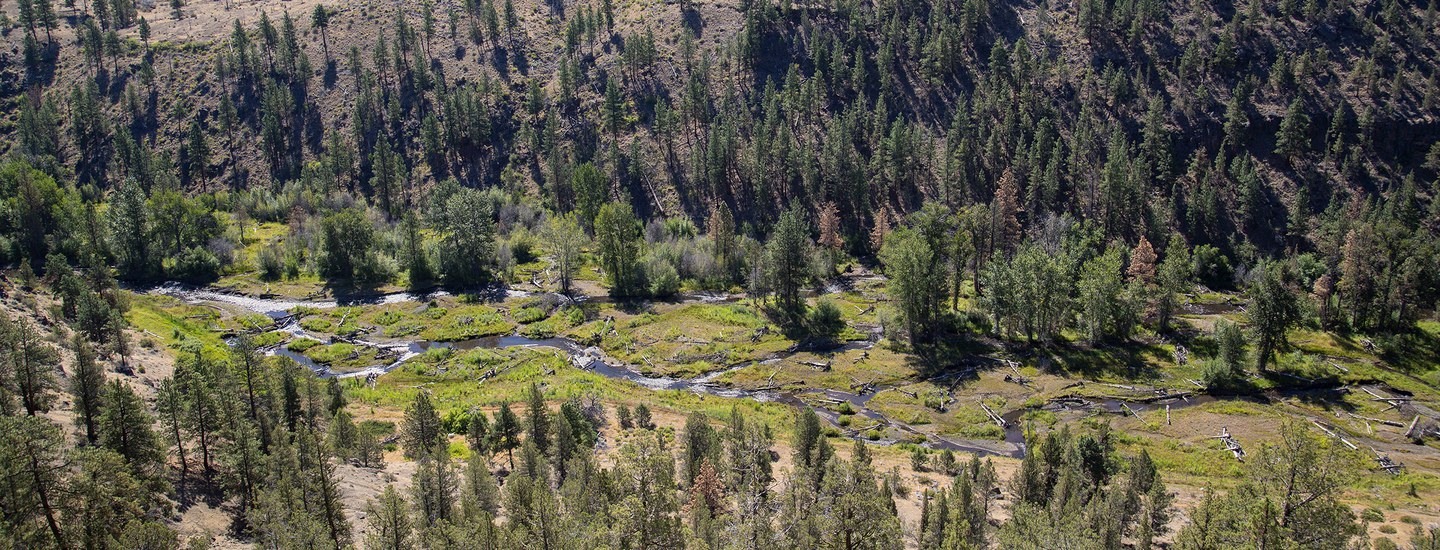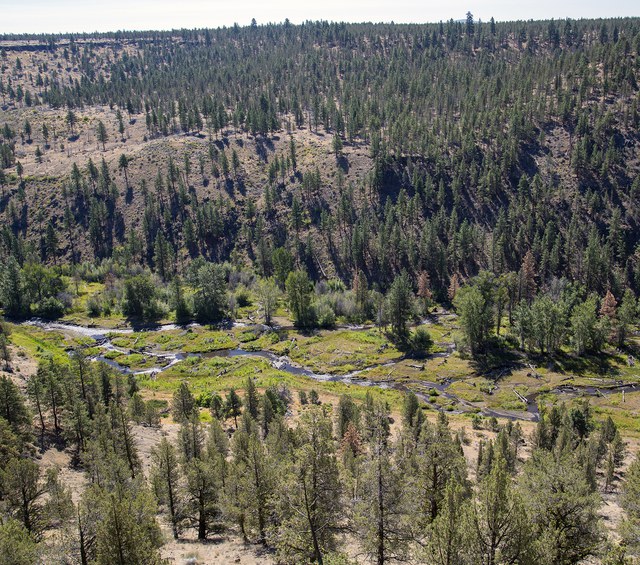The Land Trust and our restoration partners began the first phase of a six-mile restoration of Central Oregon's Whychus Creek in 2016. Efforts were first focused on the northernmost mile of creek at Whychus Canyon Preserve with the goal of improving habitat in and around the creek for fish and wildlife. We started the second phase of restoration in 2021, focusing on the southernmost portion of the creek that runs through Rimrock Ranch. The remainder of Rimrock Ranch was completed in 2023. Planning is currently underway to complete the final portion of the restoration on the remainder of the creek at Whychus Canyon Preserve.
Why restore Whychus Creek?
Together Whychus Canyon Preserve and Rimrock Ranch protect six miles of Whychus Creek. Like other long stretches of this creek in Central Oregon, the portions of Whychus Creek that pass through these properties were straightened and bermed in the mid 1900’s to keep the creek in place. This in turn diminished fish and wildlife habitat in and along the creek.
Historically, Whychus Creek was a mixture of narrow canyon stretches, and stretches with broad, well-vegetated meadows where the creek could spill over its banks. The biological importance of these large meadows was huge, especially considering all the arid land surrounding them. They provided diverse stream and side channel habitats for fish to spawn, rear, and hide. Streamside vegetation provided cover for wildlife and helped maintain cool stream waters. Nearby wetlands and oxbows were home to amphibians and songbirds.
Only a small portion of the total length of Whychus Creek can provide this critical meadow habitat. Camp Polk Meadow Preserve is one of these special sections and Whychus Canyon Preserve and Rimrock Ranch are another. Our goal in restoring the creek through these valuable stretches is to help return the creek to a healthy, biologically diverse condition.
How will the restoration happen?
Given the size and scale of the restoration, work will occur in phases over many years. The first phase started in 2016 and focused on approximately 1.5 miles of Whychus Creek in the northernmost part of Whychus Canyon Preserve. Learn more about those efforts and see how it is growing and changing.
The second phase started in 2021 and continued in 2023 and focused on the portion of the creek that runs through Rimrock Ranch. Much of the work has been similar to the 2016 restoration project at Whychus Canyon Preserve. Construction crews are on site for several weeks to remove berms that were holding the stream in its straight alignment; they carve out soil in some areas and fill it in in others. In the process, they leave islands of mature vegetation to help provide mixed topography and maintain the healthy cottonwood, willow, and dogwood that were growing.
Salvaged whole trees are also added throughout the restoration area to slow the flow of water, reduce erosion as the plants grow in, and create complex habitat for fish and wildlife (learn more about the importance of wood in streams). Finally, after construction is complete, the water in Whychus Creek is slowly returned to move freely across the historic floodplain.
Finally, each fall during the restoration, thousands of native trees, shrubs, wildflowers and grasses were planted and seeded to provide stream shade, bank and floodplain stability, and habitat for wildlife. Then, the project area is left alone to rest, recover, and naturally evolve and grow.
Who is doing the restoration?
The Land Trust has partnered with a variety of partners on this project including: Upper Deschutes Watershed Council, Oregon Department of Fish & Wildlife, U.S. Fish & Wildlife Service, U.S. Forest Service, Confederated Tribes of Warm Springs Reservation, Portland General Electric, and Bureau of Land Management.
Learn more about the restoration:
- Four years after work was completed, find out what the data is telling us about the restoration of Whychus Creek at Whychus Canyon Preserve.
- See before and after videos of creek restoration area that was completed in 2016.
- The importance of woody debris in streams restoration projects.
- Learn why meadows are so important to the health of Whychus Creek.


